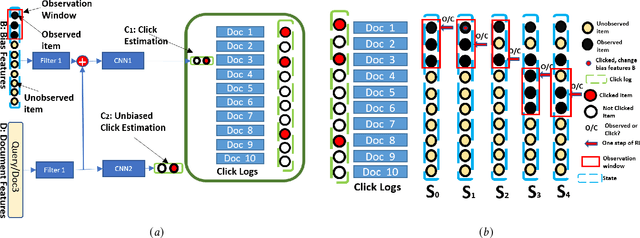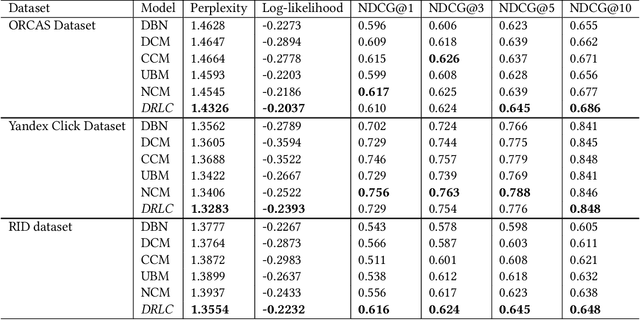De-Biased Modelling of Search Click Behavior with Reinforcement Learning
Paper and Code
May 21, 2021


Users' clicks on Web search results are one of the key signals for evaluating and improving web search quality and have been widely used as part of current state-of-the-art Learning-To-Rank(LTR) models. With a large volume of search logs available for major search engines, effective models of searcher click behavior have emerged to evaluate and train LTR models. However, when modeling the users' click behavior, considering the bias of the behavior is imperative. In particular, when a search result is not clicked, it is not necessarily chosen as not relevant by the user, but instead could have been simply missed, especially for lower-ranked results. These kinds of biases in the click log data can be incorporated into the click models, propagating the errors to the resulting LTR ranking models or evaluation metrics. In this paper, we propose the De-biased Reinforcement Learning Click model (DRLC). The DRLC model relaxes previously made assumptions about the users' examination behavior and resulting latent states. To implement the DRLC model, convolutional neural networks are used as the value networks for reinforcement learning, trained to learn a policy to reduce bias in the click logs. To demonstrate the effectiveness of the DRLC model, we first compare performance with the previous state-of-art approaches using established click prediction metrics, including log-likelihood and perplexity. We further show that DRLC also leads to improvements in ranking performance. Our experiments demonstrate the effectiveness of the DRLC model in learning to reduce bias in click logs, leading to improved modeling performance and showing the potential for using DRLC for improving Web search quality.
 Add to Chrome
Add to Chrome Add to Firefox
Add to Firefox Add to Edge
Add to Edge